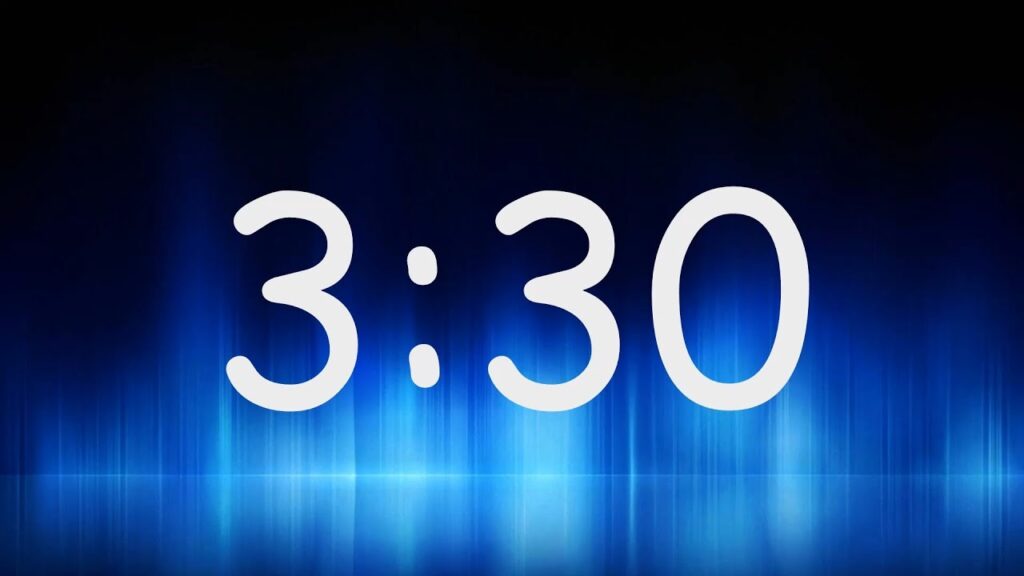How Much Longer Until 3:30?
As we go about our daily lives, it’s common to find ourselves eagerly anticipating a specific time, whether it’s the end of the workday, a scheduled meeting, or a long-awaited event. One of the most frequently asked questions is “How much longer until 3:30?” This simple query reflects our desire to manage our time effectively and ensure we arrive at our destinations or complete our tasks on time. In this comprehensive article, we will explore various methods and tools to determine how much time remains until 3:30, the factors that can influence our perception of time, and the importance of effective time management.
Understanding Time Perception
Time perception is a complex phenomenon that varies from individual to individual and can be influenced by numerous factors, including age, mood, and activity level. When we are engaged in an enjoyable or stimulating activity, time can seem to fly by, while waiting for something to happen can make the minutes feel like hours. This subjective experience of time is known as the “time-flies-when-you’re-having-fun” effect.Factors that can influence time perception:
- Age: As we grow older, our perception of time can change. Studies have shown that time seems to pass more quickly as we age, a phenomenon known as the “age-related time acceleration effect.”
- Mood: Our emotional state can significantly impact how we perceive time. When we are happy, time can seem to move faster, while feelings of boredom or anxiety can make time drag on.
- Attention: The amount of attention we devote to a task or activity can affect our perception of time. When we are focused on a particular activity, we may be less aware of the passage of time.
- Anticipation: Waiting for something to happen, such as a specific time, can make time seem to move more slowly. This is known as the “waiting effect.”
Methods for Determining Time Until 3:30
There are several methods available for determining how much time remains until 3:30, each with its own advantages and disadvantages.
- Mental Calculation: One of the simplest methods is to mentally calculate the time remaining until 3:30. This involves subtracting the current time from 3:30 and can be done quickly in your head. However, this method can be prone to errors, especially if you are distracted or working with a complex time difference.
- Analog Clock: Using an analog clock to determine the time remaining until 3:30 can be a useful visual aid. By observing the position of the hour and minute hands, you can easily see how much time has passed since the last hour and how much time remains until the next hour. However, this method may not provide the most precise measurement, especially if you are working with smaller time increments.
- Digital Clock: Digital clocks display the current time in a clear and unambiguous format, making it easy to determine the exact time remaining until 3:30. By subtracting the current time from 3:30, you can quickly calculate the time remaining. Digital clocks are widely available on smartphones, computers, and dedicated devices, making them a convenient option for most people.
- Online Tools and Apps: There are numerous online tools and apps available that can help you determine the time remaining until 3:30. These tools often provide a countdown timer or a simple calculation of the time difference, making it easy to track your progress throughout the day. Some popular options include:
- Countdown Timer Websites: These websites allow you to enter a specific time and date and provide a countdown to that event. Examples include Countdown Timer by Calculat.io and Time Until Countdown by Datayze.
- Time Tracking Apps: Apps like Toggl and RescueTime can help you track how you spend your time throughout the day, providing insights into how much time you have left until 3:30 or any other scheduled event.
- Voice Assistants: Virtual assistants like Siri, Alexa, and Google Assistant can provide quick answers to questions about the time remaining until 3:30 when asked directly.
Factors Affecting Time Until 3:30
Several factors can influence how much time remains until 3:30, including:
- Time Zone: If you are in a different time zone than the location of the 3:30 event, you will need to adjust your calculations accordingly. For example, if the event is scheduled for 3:30 PM EST and you are in the Pacific Time Zone, you would need to subtract 3 hours from the current time to determine the time remaining.
- Daylight Saving Time: During periods of daylight saving time, clocks are set forward by one hour, which can affect the time remaining until 3:30. Be sure to account for this change when making your calculations.
- Scheduled Breaks and Meetings: If you have scheduled breaks or meetings between the current time and 3:30, you will need to factor these into your calculations. For example, if you have a meeting from 2:00 PM to 3:00 PM, you would need to subtract that time from the total time remaining until 3:30.
- Unexpected Delays: Unforeseen events, such as traffic jams, technical difficulties, or unexpected tasks, can delay your progress and affect the time remaining until 3:30. It’s important to build in some buffer time to account for these potential delays.
The Importance of Time Management
Effectively managing the time remaining until 3:30 is crucial for ensuring that you arrive at your destination or complete your tasks on time. By using the methods and tools outlined above, you can gain a better understanding of how much time you have left and make more informed decisions about how to use that time effectively.Some key benefits of effective time management include:
- Reduced Stress: By knowing how much time you have left, you can plan your activities more effectively and avoid feeling rushed or overwhelmed.
- Increased Productivity: When you have a clear understanding of your time constraints, you can prioritize your tasks and focus on the most important ones first.
- Improved Punctuality: By tracking the time remaining until 3:30, you can ensure that you arrive at your destination on time and avoid inconveniencing others.
- Better Work-Life Balance: Effective time management can help you balance your work responsibilities with your personal life, reducing stress and improving your overall well-being.
FAQ Section
Q1: How do I calculate the time remaining until 3:30?
A1: To calculate the time remaining until 3:30, subtract the current time from 3:30. For example, if the current time is 2:15, the time remaining until 3:30 would be 1 hour and 15 minutes.
Q2: What factors can affect the time remaining until 3:30?
A2: Factors that can affect the time remaining until 3:30 include time zone differences, daylight saving time, scheduled breaks and meetings, and unexpected delays.
Q3: Are there any online tools or apps that can help me track the time until 3:30?
A3: Yes, there are numerous online tools and apps available that can help you track the time remaining until 3:30, such as countdown timer websites, time tracking apps, and virtual assistants.
Q4: How can effective time management help me arrive at 3:30 on time?
A4: Effective time management can help you arrive at 3:30 on time by reducing stress, increasing productivity, improving punctuality, and helping you balance your work and personal responsibilities.
Q5: What is the “time-flies-when-you’re-having-fun” effect?
A5: The “time-flies-when-you’re-having-fun” effect is a phenomenon where time seems to pass more quickly when we are engaged in an enjoyable or stimulating activity.
Q6: How can I build in buffer time to account for unexpected delays?
A6: To build in buffer time, add an extra 10-15 minutes to your calculations to account for potential delays. This can help ensure that you arrive at 3:30 on time even if unexpected events occur.
Q7: What is the “age-related time acceleration effect”?
A7: The “age-related time acceleration effect” is a phenomenon where time seems to pass more quickly as we grow older.
Q8: Can using a countdown timer help me stay motivated until 3:30?
A8: Yes, using a countdown timer can help you stay motivated by providing a visual representation of the time remaining until 3:30. Watching the timer count down can help you stay focused on your goals and make the most of your time.
Q9: How can I prioritize my tasks to make the most of the time remaining until 3:30?
A9: To prioritize your tasks, make a list of everything you need to accomplish before 3:30 and rank them in order of importance. Focus on completing the most critical tasks first and delegate or postpone less important ones if necessary.
Q10: Where can I find more information about time management and productivity?
A10: For more detailed information, you can visit the Wikipedia page dedicated to time management.
Summary Table
| Method | Advantages | Disadvantages |
|---|---|---|
| Mental Calculation | Quick and easy | Prone to errors, especially with complex time differences |
| Analog Clock | Provides a visual representation of time | May not be as precise as digital clocks |
| Digital Clock | Clear and unambiguous, easy to calculate time | Requires access to a digital clock |
| Online Tools and Apps | Provide countdown timers and time calculations | Require access to the internet and a device |
This comprehensive guide provides a thorough understanding of how to determine the time remaining until 3:30, the factors that can influence time perception, and the importance of effective time management. By using the methods and tools outlined in this article, you can gain a better understanding of your time constraints and make more informed decisions about how to use your time effectively.



